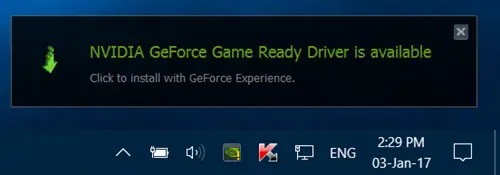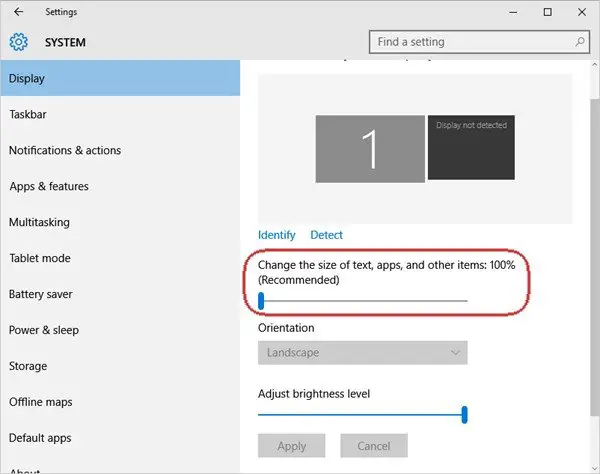Some applications look good only when run in fullscreen. If you are watching a movie or playing a game, you’d want to use the entire screen space for the app. However, some Windows 11/10 OS users complain that they face different types of Windows fullscreen problems & issues. Sometimes, it won’t go fullscreen; sometimes, the fullscreen covers only a part of the screen, while at other times, it just goes to a maximized window instead. Let’s see some steps that may help you troubleshoot the issue.
Windows PC full screen problems

Full Screen problems while playing Games, watching Movies, etc. in Windows 11/10
Facing Windows 11/10 full-screen problems while watching movies or playing games? here are some suggestions to help you.
1] Confirm that Game full-screen setting is turned On
Upgrading the operating system is sometimes a terrible task, and certain things go wrong. If you cannot run the game’s fullscreen, you may want to check the game’s settings. Most games have a setting that turns ON/OFF the fullscreen mode. See the status of fullscreen mode in the games that cannot play fullscreen. If it is OFF, turn it to ON.
Note that not all games provide the setting, but most games do. While you are at it, you might check the resolution as well. Try changing the game resolution from inside the Game Settings a few times to see if it works. Try increasing the resolution first and then see if Windows fullscreen problems & issues go away. If increasing or default resolution does not work, try reducing the resolution a bit to see how it affects the fullscreen issue. If you see any improvement, you may reduce it further to see if you can play it fullscreen without losing out on details.
Related: Games loading slow on Windows PC
2] Check WindowsDisplay Properties
Every operating system has a default resolution. When you upgrade to the previous resolution, the resolution already set is carried forward to new installations. In case of clean installations, the operating system determines the best resolution for your display and sets it to what it thinks is best. When this display resolution conflicts with that of games, you may not be able to play games fullscreen.
To find out the minimum resolution supported by a game, check its system requirements. These could be printed on the game’s DVD. If you downloaded the game, check for an email that confirms your purchase. If you still can’t find the system requirements, check with customer support.
This section summarizes that if you are facing Windows 11/10 fullscreen problems & issues, you have to check that Windows supports the resolution the game requires. Suppose the game requires 360p and Windows 11/10 is 780 (by default, Windows 10 is 1024 by 768 for regular displays); there will be a conflict. You will then have to see if your copy of Windows can lower the resolution to 360. If not, you will always get the game in window mode. You may or may not be able to maximize the window.
Another takeaway from this section is that most games need to be upgraded. They still run on lower resolutions, while most of today’s operating systems, like Windows, support much higher resolutions. That could be why you cannot play games fullscreen in Windows 11/10.
3] Upgrade your Graphics Card Drivers

You may need to update your Graphics Driver. When you upgrade via a clean install, Windows installs generic drivers for most of your hardware. You can try installing the original device driver software if you still have it. It has helped some users. If installing original device drivers does not help, you may also try your luck by upgrading to latest device driver software available on the manufacturer’s website.
Read: How to enable Optimizations for windowed games in Windows 11
4] Windows Text and Font Size
This may not make a difference if nothing works you may want to try this. I do not believe this is going to make any difference. If the font size on your Windows computer is set to more than 100%, then some users have reported that it creates Windows fullscreen problems & issues.

Many users often increase the font size using the slider in Display Properties to scale it up a bit so that the new GUI is not hard on eyes. Click on Settings and then in the window that appears, click System. The very first option in the left pane is called Display. While selecting that option, see the right pane to check if the display is scaled up or down. It should be showing 100. If not, move the slider to make sure the display fonts are set to 100% and not more.
You may also try changing the default display if you are using more than one.
Let us know if any of the above solves your Windows full-screen problems.
See this post if your Windows computer crashes while playing games.
Windows 7 shows 60hz, but Windows 10 shows only 59.94hz, fix this, Microsoft !!! please
It seems Text and Font Size setting can crop games that aren’t actually fullscreen, but use a fullscreen borderless window and then don’t detect the new maximum window size. How to resolve that without changing scaling settings is going to depend on the game. It could also impact games or other programs that try to force their window size to something bigger than the scaled height/width limits.
The text size option made the difference for me. I had it set to 150% and full screen internet browser, including streaming videos did not work; came up black. However, I reduced it to 125% and now it works fine! This is for 3840×2160 resolution.
Dinosaur world from BBC – how to fix for Windows 10? http://www.bbc.co.uk/sn/prehistoric_life/games/dinosaur_world/
Happened same to me. All I had to fix was go to windows settings. From Multiple displays select “Duplicate these displays” apply. Then again select show only on 2 ( second screen). It worked. I have 870m graphics card. 1 whole month I had this problem
Since I installed Win 10, when I watch online videos in full screen mode (like Youtube, etc) it goes back to regular screen size (full screen auto-reverts back to the original size) after about 1min. I can’t seem to find any settings regarding this time sensitive issue. Is anyone else experiencing this or have a fix?
I have same issue going full screen then backing out it goes to crap. Any fix ?
Why does the forced updates in Windows10 always change my video settings without my permission?
The players I use are not a part of the Windows “lease”…leave them alone.
WIn 10 suck with so much bugs kys microsoft pls